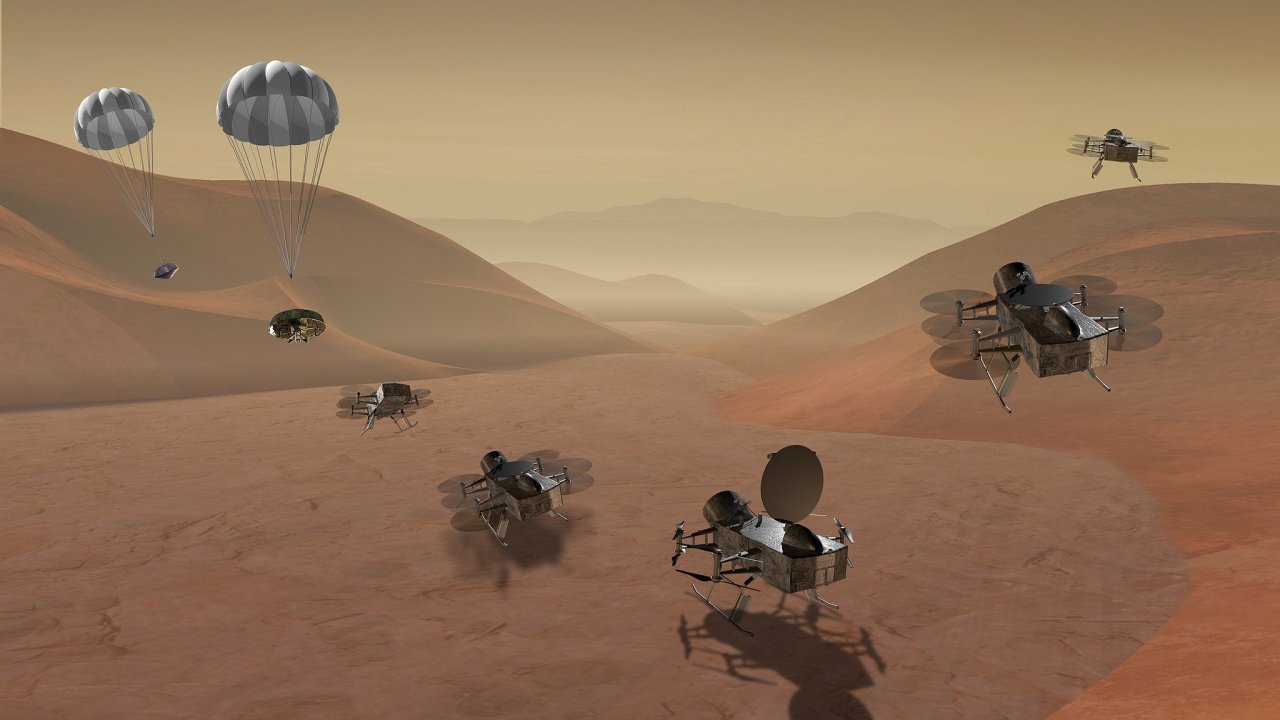The cosmos is a treasure trove of secrets, waiting to be unveiled, and NASA’s latest initiative, the Dragonfly mission, is poised to be a game-changer in our interplanetary exploration efforts. Slated for launch in 2026, this innovative flying vehicle intends to soar across the surface of Titan, Saturn’s ocean moon, to unravel the mysteries it holds. With some rather tantalizing properties that mimic early Earth, Titan presents a unique opportunity to deepen our understanding of organic chemistry and planetary processes. Let’s embark on an exploration of what makes this mission so exciting.
Why Titan? A Glimpse into the Moon’s Unique Qualities
Titan stands out in our solar system, offering a captivating mix of familiar and alien features. It boasts rivers and lakes filled with liquid methane, an atmosphere residing largely composed of nitrogen, and complex organic materials strewn across its surface. While it’s far from hospitable as a human environment, Titan’s cold and harsh conditions may be more revealing of our planet’s formative years than we previously thought. Principal investigator Elizabeth Turtle captures the essence of the mission, stating, “These ingredients…are sitting on the surface on Titan. They’ve been doing chemistry experiments, basically, for hundreds of millions of years.”
The Dragonfly Craft: Engineering Innovation Meets Exploration
The Dragonfly mission is not just about flying around Titan; it’s about deploying advanced technology to gather invaluable data. The rotorcraft will utilize a unique method of flight, allowing it to maneuver much more easily in Titan’s dense atmosphere compared to the challenges faced on Earth. With a design reminiscent of a drone, Dragonfly is set to flit from location to location, sampling surface materials and capturing stunning images of this alien landscape.
- Launch Date: 2026
- Travel Duration: Roughly 8 years, landing in 2034
- Features: Equipped with drills, probes, and high-resolution cameras
- Flight Mechanism: Eight small rotors designed to overcome Titan’s low gravity and thick atmosphere
Investigating Prebiotic Chemistry and Potential Origins of Life
One of Dragonfly’s primary objectives will be to investigate the rich organic material on Titan’s surface. With insights gleaned from previous missions like Cassini and Huygens, the Dragonfly rover is designed to perform intricate experiments and collect samples that could illuminate our understanding of the origins of life on Earth and beyond.
The idea of exploring a moon that resembles the primordial Earth is incredibly compelling, as scientists are curious about how life might arise under conditions vastly different from our own. Titan’s unique chemical environment could potentially hold clues to the early processes that paved the way for complex organisms.
What Lies Ahead: A Future of Discovery and Innovation
Navigating Titan’s complex landscape presents exciting challenges and opportunities. With rotors small enough to operate efficiently in its dense atmosphere, the Dragonfly is a testament to the ingenuity of modern aerospace engineering. NASA’s dedication to ghostly exploration will surely produce a wealth of information that not only aims to address the questions about life beyond our planet but also enriches our understanding of Earth’s own history.
As we eagerly anticipate the launch and subsequent findings of Dragonfly, we are reminded of the pioneering spirit that continues to drive humanity’s quest for knowledge amongst the stars.
At fxis.ai, we believe that such advancements are crucial for the future of AI, as they enable more comprehensive and effective solutions. Our team is continually exploring new methodologies to push the envelope in artificial intelligence, ensuring that our clients benefit from the latest technological innovations.
For more insights, updates, or to collaborate on AI development projects, stay connected with fxis.ai.
Conclusion: The Future of Space Exploration Awaits
As we stand on the brink of the Dragonfly mission, it’s evident that this innovative endeavor will offer a revolutionary perspective on Titan and possibly the early conditions of life on Earth. With details unfolding over the next few years, more discoveries await, further igniting our curiosity about the cosmos. The ultimate goal is not just to explore but to expand our understanding of not only what is out there but also what it means for life here at home.

